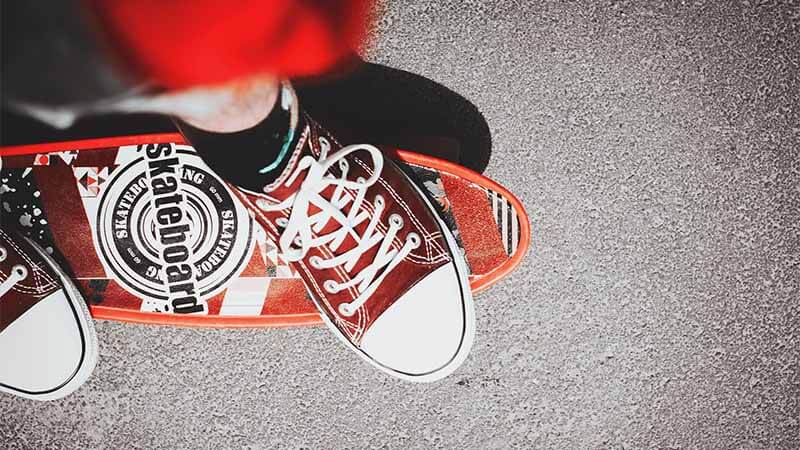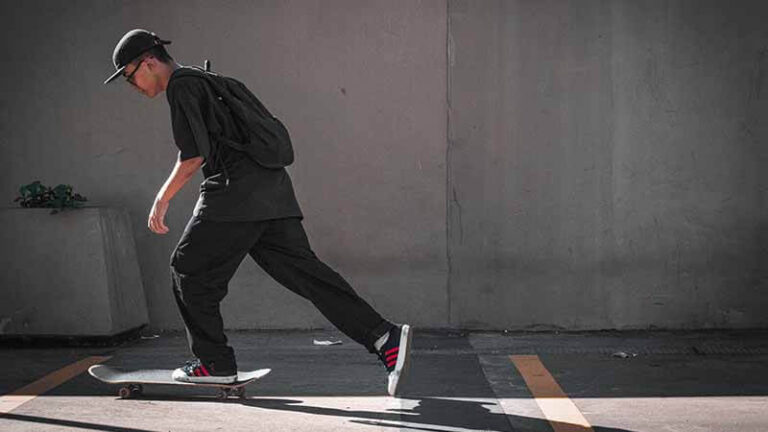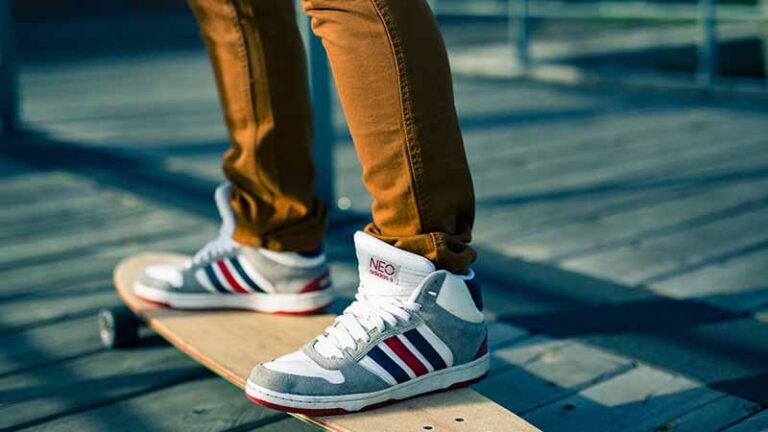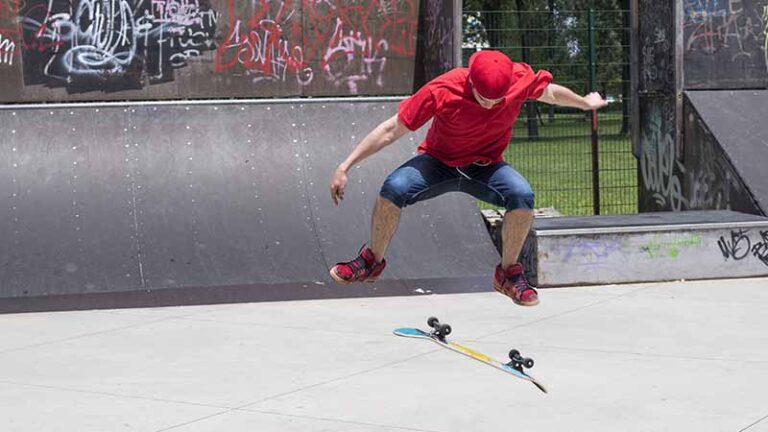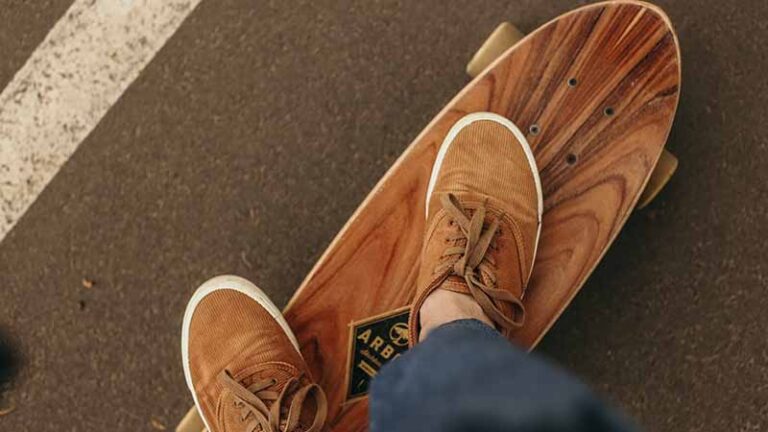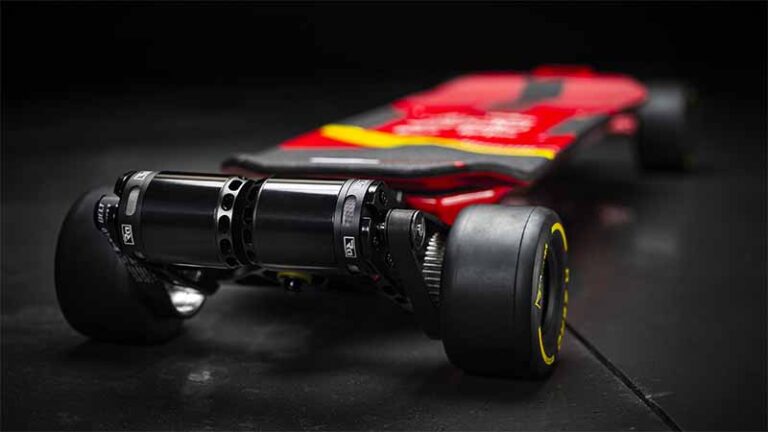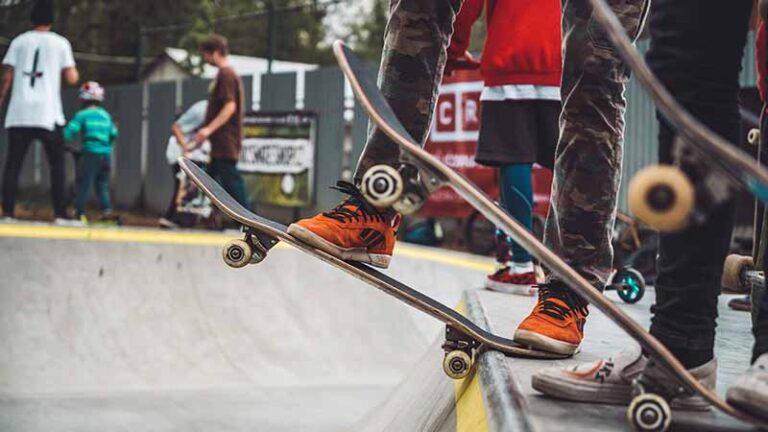How to Stand on a Skateboard
Introduction
History of Skateboarding
Skating began in California in the 1940s and 1950s, when surfers needed the means to surf on land when the waves were flat. Skateboards were originally manufactured from wooden boxes or boards with roller skate wheels attached to the bottom. Skateboarding became more popular in the 1960s, and skate parks were established, but they were frequently unsafe and badly constructed.
Skateboarding’s popularity fell in the 1970s, but it resurfaced in the 1980s with the introduction of the Ollie, which allowed skaters to jump and perform tricks. Skateboarding is now a global phenomenon with millions of fans worldwide, and it is even an Olympic sport.
Importance of knowing how to stand on a skateboard
Understanding how to stand on a skateboard is critical for riding it securely and comfortably. Correct board stance and balance can help reduce falls and injuries. When standing on a skateboard, there are two basic stances: conventional and goofy. The regular stance has your left foot in front of the board and your right foot in the back, whereas the goofy stance has your right foot in front and your left foot in the back. Knowing how to stand on a skateboard correctly can also help beginners build confidence and graduate with more sophisticated techniques and tricks.
Common concerns about standing on a skateboard
Some common worries regarding standing on a skateboard are as follows:
- Fear of falling: Many people are terrified of falling and harming themselves on a skateboard. To overcome this phobia, begin with a comfortable stance and practice on a flat surface before attempting more challenging techniques.
- Balance: It can be difficult to balance on a skateboard, especially for beginners. Balance, on the other hand, can be developed and perfected with practice and good technique.
- Correct foot placement is essential for maintaining balance and control on a skateboard. Finding a comfortable stance and practicing foot placement is critical until it becomes second nature.
- Board size and shape: The size and shape of the skateboard you choose can determine how comfortable you feel standing on it. It is critical to select a board that is appropriate for their body size and the type of riding they intend to accomplish.
Equipment
Types of skateboards
There are various sorts of skateboards on the market, each tailored for a specific riding style. The following are some of the most common types of skateboards:
- Street skateboards are intended for tricks and movements on flat surfaces such as skate parks, stairs, and railings.
- Cruiser skateboards are excellent for transportation and cruising around town. They are typically larger in size than street skateboards and have softer wheels for a more comfortable ride.
- Longboards are longer and wider than standard skateboards and are intended for cruising, carving, and downhill riding.
- Old School skateboards are similar to the boards that were popular in the 1970s and 1980s. For a smoother ride, they have a wider profile and larger wheels.
- Electric skateboards: Powered by a battery and a motor, electric skateboards are a great solution for mobility and commuting.
Skateboard parts
A skateboard is made up of various pieces, each of which is important to its performance. The following are the main components of a skateboard:
- Deck: The deck is the flat board that serves as the skateboard’s main body.
- Trucks: Trucks are T-shaped metal components that connect the wheels to the deck and enable turning and navigating.
- Skateboard wheels are typically constructed of a polyurethane and come in a variety of sizes and hardness levels.
- Bearings are little metal rings that go within the wheels and allow them to spin smoothly.
Choosing the right skateboard for beginners
Choosing the proper skateboard for beginners might be difficult, but it is critical to select a board that meets their needs and ability level. Here are some pointers for selecting the best skateboard for beginners:
- Consider your riding style: Beginners should select a board that matches their chosen riding style. A cruiser or longboard might be a suitable choice if they intend to utilize the board for transportation. A street skateboard would be better suited for tricks and maneuvers.
- Deck dimension: The deck dimension should be proportional to the rider’s height and shoe size. A smaller deck is better suited to younger or smaller riders, whereas a larger deck is better suited to taller or heavier riders.
- Wheel size and hardness: For beginners, softer and larger wheels provide a smoother ride and better stability.
- Budget: Because skateboards vary in price, it’s critical to set a budget and stick to it. For novices, it is feasible to get a high-quality skateboard at a reasonable price.
Body Positioning
Feet placement
Skaters must be able to put their feet correctly. Correct foot placement can increase balance and stability, giving you more control over your skateboard. These are some pointers for good foot placement:
- Depending on your stance, place your front foot over the front truck bolts at a small inclination (regular or goofy).
- The ball of your foot should be above the truck bolts, with your toes hanging over the board’s edge.
- Put your rear foot on the skateboard’s tail, toes hanging over the side.
- Your back foot should be perpendicular to the board and centered in the tail.
Proper posture
Maintaining balance and stability when riding a skateboard requires good posture. Here are some pointers to help you keep a good posture:
- Stand shoulder-width apart with your feet shoulder-width apart and your knees slightly bent.
- Have a straight back and relaxed shoulders.
- Look ahead rather than down.
- Keep your arms outstretched for balance.
Weight distribution
Controlling the skateboard and completing tricks requires proper weight distribution. These are some weight-distribution guidelines:
- To maintain balance, keep your weight centered over the board.
- When accelerating or turning, shift your weight to the front foot.
- When slowing or halting, shift your weight to the rear foot.
- When doing tricks, adjust your weight to either the front or rear foot as needed.
Common mistakes and how to avoid them
- Excessive forward or backward leaning: This can cause you to lose your balance and tumble off the board. To avoid this, keep your weight centered on the board and move slowly.
- Glancing down at your feet: This can lead you to lose your balance and lose control of the board. Instead, keep your head up and focus ahead.
- Overthinking: Overthinking might cause you to become anxious and lose attention. Relax and allow your intuition to guide you.
- Beginning too quickly: Starting too quickly can make controlling the skateboard challenging. Begin slowly and build up your speed as you acquire confidence and experience.
- Failure to use protective equipment: Failure to wear protective equipment increases the risk of injury. When skateboarding, always wear a helmet, knee pads, elbow pads, and wrist guards.
Techniques for Standing on a Skateboard
Stationary standing
The first step in learning to ride a skateboard is to stand still. Here are some stationary standing tips:
- Place your feet shoulder-width apart, forward-facing, and perpendicular to the board.
- Put your front foot on the front truck bolts and your back foot on the skateboard’s tail, toes hanging over the side.
- Maintain your weight evenly distributed across the board and your knees slightly bent.
- To improve your balance, practice transferring your weight from one foot to the other.
Pushing off and rolling
After learning stationary standing, the next step is to push off and roll. Here are some pointers for getting started and rolling:
- Put your front foot on the front truck bolts and your back foot on the skateboard’s tail, toes dangling over the side.
- Lift your rear foot off the ground and move your weight to your front foot.
- Once the board is rolling, place your back foot on it and keep your balance.
- When you need to speed up, use your rear foot to push off again.
Basic turns and carving
Turning and carving are necessary skills for managing the skateboard and navigating obstacles. Here are some basic turn and carving tips:
- Transfer your weight on your front foot and turn your shoulders in the desired direction.
- To initiate the turn, apply pressure on the front truck with your front foot and the back truck with your back foot.
- Increase your momentum by leaning in the direction of the turn.
- To carve, shift your weight from your toes to your heels and back in a fluid motion, moving your shoulders in the direction you want to go.
Stopping the skateboard
Stopping the skateboard is essential for avoiding accidents and keeping control. These are several skateboard-stopping tips:
- Foot braking: Slow down and come to a halt by dragging your back foot on the ground. This approach is best suited to slower speeds.
- Power sliding: Transfer your weight to the rear foot and turn the board perpendicular to the travel direction. Apply pressure on the front truck with your front foot, causing the wheels to slide and slow down.
- T-stop: Form a T by dragging your back foot perpendicular to the board. Maintain balance and control by using your front foot.
- Carving to a halt: Do a series of wide bends, gradually slowing down until you come to a halt. This approach works well at faster speeds.
Tips for Beginners
Starting with a stationary skateboard
Beginning with a stationary skateboard is the first step to learning how to ride. Here are some pointers for getting started with a stationary skateboard:
- Put your skateboard on a flat area with the wheels parallel to your body.
- Place your feet shoulder-width apart on the board and center your weight over it.
- To improve your balance, practice transferring your weight from one foot to the other.
- Get acquainted with the board’s movement and vibrations.
Finding a suitable location to practice
Choosing a proper site to practice skateboarding is vital for safety and convenience. Here are some pointers to help you select a suitable location:
- Search for surfaces that are flat, smooth, and devoid of impediments.
- Avoid congested places or areas with high foot traffic.
- If available, use dedicated skateboarding spots or parks.
- Be aware of local skateboarding legislation and rules.
Getting comfortable with balance and weight distribution
Practicing balance and weight distribution is critical for controlling the skateboard and avoiding accidents. Here are some pointers to help you get familiar with balance and weight distribution:
- Stand on the board with your feet shoulder-width apart and your weight evenly distributed.
- To improve your balance, practice transferring your weight from one foot to the other.
- Begin slowly and progressively increase your speed as you develop confidence.
- Turning and cutting practice can help you improve your control and balance.
Practicing in a safe environment with protective gear
It is critical to practice in a safe area while wearing protective gear to avoid injuries and mishaps. Here are some pointers for practicing in a secure setting:
- When skateboarding, always wear a helmet, knee pads, elbow pads, and wrist guards.
- If possible, practice at a designated skateboarding area or park.
- Avoid practicing in areas where there is a lot of foot traffic or obstructions.
- Be aware of your surroundings and considerate of others who may be using the area.
Conclusion
Skateboarding is a thrilling activity, but it is critical, to begin with, the fundamentals and practice in a safe atmosphere. Here are some crucial items to remember:
- Understand the various types of skateboards and skateboard parts, and select the appropriate skateboard for your skill level.
- Maintain balance and control by paying attention to good foot placement, posture, and weight distribution.
- Begin with standing stationary, then graduate to pushing off and rolling, basic turns and carving, then stopping the skateboard.
- Choose an appropriate practice area and always use protective equipment such as a helmet, knee pads, elbow pads, and wrist guards.
- Practice on a regular basis and be gentle with yourself as you develop.
Skating can be difficult at first, but with constant practice, you can gain the skills and confidence needed to become a proficient skateboarder. It is critical to always prioritize safety.
Read More;

